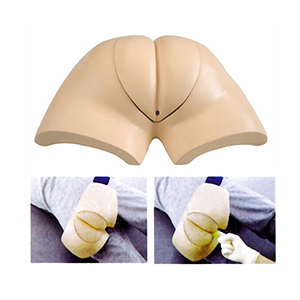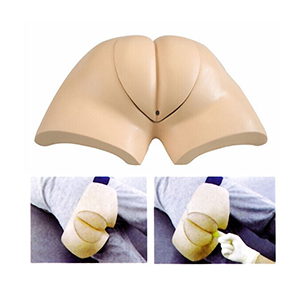Nursing students often feel nervous and uneasy in practical operations, especially sensitive operations involving patient privacy and physiological needs. As a simulation teaching tool, the dress-up manual retrieval training model can provide a large number of practical opportunities for students in a risk-free environment, thereby effectively improving their clinical self-confidence.
1. Education: Provide risk-free practice platform
For nursing students, manual defecation is a special nursing skill involving the privacy and dignity of patients, which may cause anxiety and tension due to unfamiliar operation at the beginning of learning. By simulating real situations, the dressed-style manual defecation training model enables students to practice repeatedly in a stress-free environment, reducing their concerns about patient operation. Through continuous simulation operations, students can gradually overcome their nervousness while mastering the technology and enhance their self-confidence in clinical operations.

Artificial defecation training model
2. Clinical model: simulate the real operating situation
The design of the dressed-in manual defecation training model is often highly compatible with the anatomy and operating scenarios of real patients, enabling students to experience similar clinical situations in practice. The interactive and detailed nature of the model enables students to more accurately understand how to perform manual defecation correctly and hygienically, avoiding potential operational errors. Through this simulation training, students can not only master operational skills, but also gradually develop confidence in the process of simulation, and no longer feel unfamiliar and afraid when facing actual cases.
3. Industry experts: Provide professional guidance and feedback
Industry experts are able to provide targeted guidance and feedback to help students better understand the steps and key considerations when using the dressed-up manual access training model. The experience and expertise of experts can help students identify their strengths and weaknesses and improve their operational skills. Through the positive feedback of experts and the improvement of skills, students continue to accumulate experience in practice, thereby improving the confidence of clinical operation. With the support of experts, the students' learning process is smoother and they can cope more calmly in the face of clinical cases.
4. Data support: Improve skills through feedback
The dressed manual defecation training model is usually equipped with a data feedback system, which can record the trainees' operation situation in real time, including the accuracy, speed and hygiene control data. Through this data, students can clearly understand their own operational performance and make self-adjustments and optimizations. Data feedback can help students identify their strengths and weaknesses and make targeted improvements. With the improvement of the operational skills, the clinical confidence of the trainees will naturally increase, and they will be more confident to meet the challenges of future nursing.
conclusion
By providing a real and risk-free practice platform, simulating actual clinical situations, expert guidance and data feedback, the dress-up manual defecation training model can significantly improve the clinical self-confidence of nursing students. With the support of repeated practice and expert feedback, the trainees gradually overcome the tension in the operation, master the technique, and then confidently tackle the complex tasks in the actual care. This boost in self-confidence is not only vital for the trainees' professional development, but also improves the quality of patient care and improves the overall level of medical services.

